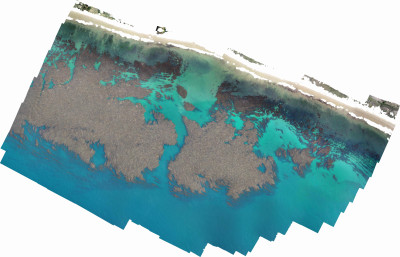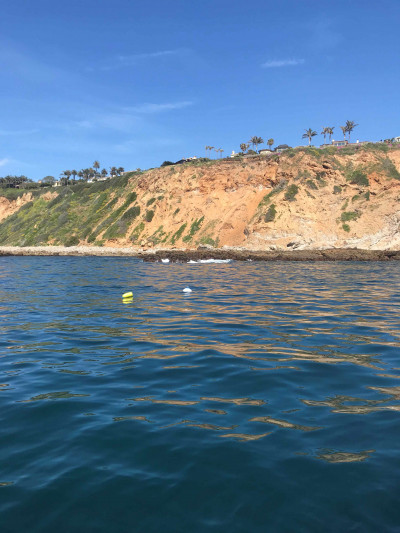When the carbon dioxide from human activities, such as burning fossil fuels, dissolves into ocean water, it raises the acidity of the water. Also, as global temperatures rise, the oxygen available in the water decreases. These changes act like alarm bells that tell marine life to evacuate to a safe space. Researchers are studying whether that safe space could be the climate refugia created by kelp forests. There, life could escape the potentially harmful waters that surround them.
Marine protected areas (MPAs) are the focus of researchers, like Tom Bell of University of California, Santa Barbara and Kerry Nickols of California State University, Northridge, who know that kelp thrive in undisturbed environments where larger predators are able to develop and eat kelp-eating sea urchins. The team of researchers, led by Adrian Stier of the University of California, Santa Barbara, study the kelp as part of the Healthy Coastal Ecosystems project funded by California Ocean Protection Council’s Proposition 84 Competitive Grants Program, which is administered by California Sea Grant and the University of Southern California Sea Grant. Stier's team is one of many studying the effects of establishing MPAs for kelp protection.

Keeping sights on the kelp forest
Like forests on land, giant kelp and bull kelp forests form dense canopies that can be viewed from space. These forests have traditionally thrived in the cold, nutrient-rich waters off the coast of California. The measure of a kelp forest’s impact on the surrounding ocean ecosystems starts with knowing the aerial extent of the kelp forest canopy. In order to understand the extent of kelp coverage, Bell used remote sensing data from satellites to measure canopy coverage within and outside MPAs and before and after the creation of MPAs. The satellite data go back to 1984, before most of California’s MPAs were established.
"At this point, we're taking the remote sensing data and integrating it with diver data from these long-term monitoring experiments to see whether you can pull out any influence of MPAs," Bell says.
Bell found that the result depended on the MPA: some MPAs had more kelp, others had less. The influence of geography had the most considerable impact, with differences seen in kelp forests found in north, central, and southern California waters.
"We've seen some declines in kelp. We've seen some recovery and some areas really haven't changed at all," says Bell. "There are always some areas that are doing well, others that are doing poorly. It is very site-specific."
More latitudinal coverage would also help tease out the effect. Many MPAs were implemented earlier in Southern California, meaning the kelp forests have been protected for a longer time. Bell would like to gather more years of data for the northern sites to make more accurate comparisons.
The COVID-19 pandemic has severely impacted the team's research by delaying field work, but Bell hopes to get another two years of data to have ten years total for some of the MPAs off the California coast, which will help his team understand whether MPAs have an effect or not on kelp.

Kelp chemistry creates a safe harbor
Once kelp is established, Nickols wants to know how it interacts with the ambient ocean water. One of the big questions for the team to answer is how long water resides within a MPA. In Southern California, currents can move quite swiftly through some MPAs. So even if the kelp is affecting seawater chemistry, it may go in and out of the system very quickly, flushing it before it can provide a refuge from climate change induced low oxygen and acidification.
"It's an interesting opportunity to combine chemical oceanography, physical oceanography, and ecology and biology to try to look at this issue," Nickols says. But, whether a higher pH or changes in dissolved oxygen is due to kelp has to be untangled by Nickols. Nickols found more of an influence of the kelp where there is less deep water upwelling and fewer waves. Researchers found the biggest effect of kelp in the canopy near the surface, where the largest biomass is accumulated and the kelp is able to efficiently photosynthesize since the sunlight is not filtered by the depths.
"But, that's not where you see the greatest stress from ocean acidification," says Nickols. "And that's not where you see the bulk of animals that are going to be impacted by ocean acidification." The water mixing makes this pattern more ambiguous in many areas, especially in Southern California. In Central California, scientists see more warm and cold water layering.
The chemistry is complicated. In areas with high upwelling, there's lower pH, but there's also a lot of nutrients and you see high kelp growth. And then, phytoplankton flourish, which increases the pH. So, it's a lot more dynamic in the upwelling areas: you get higher highs, and you get lower lows.
In the future, Nickols wants more research on how the quality of kelp changes with MPA status and how that changes with water temperature.
Fewer urchins benefits kelp
Studying kelp coverage and chemistry isn't the end all be all. Scientists want to know how the species within kelp forests interact to better understand the ecosystem's health.
"There's going to be winners and losers in MPAs. A lot of people think you establish a MPA and everything gets better," Bell says. "But, when one species increases, another species might decrease either due to predation, competition or behavior. We really need to understand how the whole food web changes within MPAs versus outside."
To better understand the marine ecosystem, the group also studied the California spiny lobster within and outside of MPAs. The lobster is an important animal in the ecosystem because they regulate the number of urchins in a forest. By having more lobsters in an area that feed on urchins that eat kelp, kelp will presumably thrive.
The team found that lobsters increased in density both in non-fished and fished MPAs, but in non-fished areas, the lobster density grew three times faster. By understanding the feedback loops between lobsters, chemistry and kelp, researchers are beginning to understand the influence of MPAs on the ability of kelp to offer a safe space for animals and plants to seek refuge under the effects of climate change.
About California Sea Grant
NOAA’s California Sea Grant College Program funds marine research, education and outreach throughout California. Headquartered at Scripps Institution of Oceanography at the University of California San Diego, California Sea Grant is one of 34 Sea Grant programs in the National Oceanic and Atmospheric Administration (NOAA), U.S. Department of Commerce.